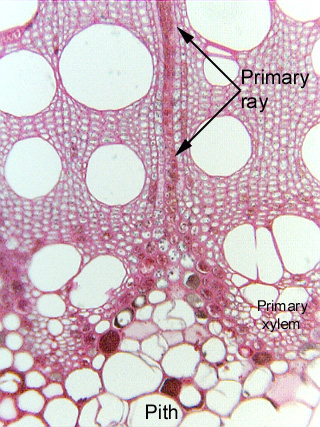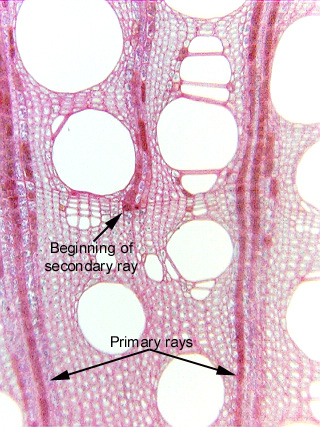 Fig.
15.3-1a and b. Transverse section
of Vitis wood (grape). The upper micrograph shows the pith, primary xylem
and innermost secondary xylem of grapevine wood. An interfascicular cambium
arose in the medullary ray, then began producing a ray of secondary xylem (and
also of secondary phloem, but that is located farther out, out of the top of the
micrograph). Because this ray formed this way and thus contacts the pith, it is
called a primary
ray.
Fig.
15.3-1a and b. Transverse section
of Vitis wood (grape). The upper micrograph shows the pith, primary xylem
and innermost secondary xylem of grapevine wood. An interfascicular cambium
arose in the medullary ray, then began producing a ray of secondary xylem (and
also of secondary phloem, but that is located farther out, out of the top of the
micrograph). Because this ray formed this way and thus contacts the pith, it is
called a primary
ray.
The lower micrograph shows the same section of wood,
but a region father out, produced more recently. Two primary rays are visible
(from just this micrograph, you cannot be certain that they are primary rays –
it is necessary to follow them to the pith), and a secondary
ray is also present. The arrow indicates the point where several
fusiform initials were transformed to ray initials, thus putting an end to
several rows of axial elements and initiating the production of a new ray
instead.